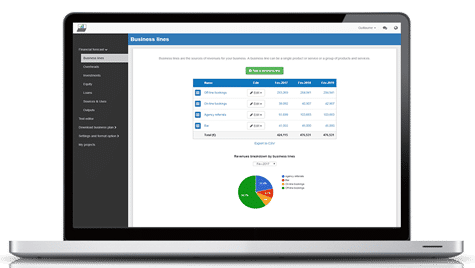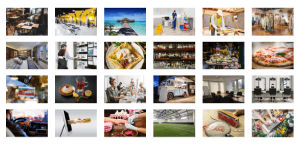How to create a financial forecast for a hot dog stall?
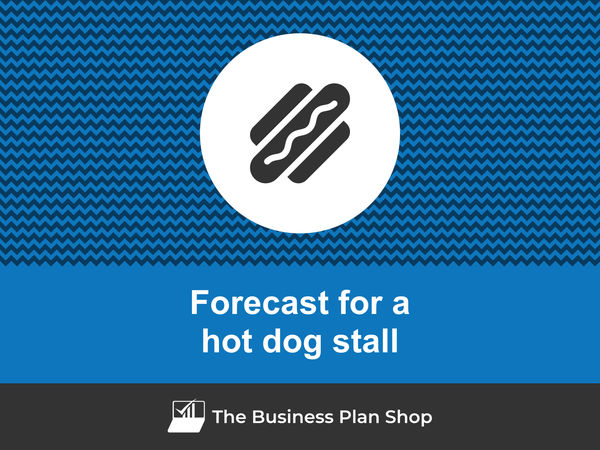
Developing and maintaining an up-to-date financial forecast for your hot dog stall is key in order to maintain visibility on your business’s future cash flows.
If you feel overwhelmed at the thought of putting together a hot dog stall financial forecast then don’t worry as this guide is here to help you.
We'll cover everything from: the main objectives of a financial forecast, the data you need to gather before starting, to the tables that compose it, and the tools that will help you create and maintain your forecast efficiently.
Let's get started!
Why create and maintain a financial forecast for a hot dog stall?
Creating and maintaining an up-to-date financial forecast is the only way to steer the development of your hot dog stall and ensure that it can be financially viable in the years to come.
A financial plan for a hot dog stall enables you to look at your business in detail - from income to operating costs and investments - to evaluate its expected profitability and future cash flows.
This gives you the visibility needed to plan future investments and expansion with confidence.
And, when your trading environment gets tougher, having an up to date hot dog stall forecast enables you to detect potential upcoming financing shortfalls in advance, enabling you to make adjustments or secure financing before you run out of cash.
It’s also important to remember that your hot dog stall's financial forecast will be essential when looking for financing. You can be 100% certain that banks and investors will ask to see your numbers, so make sure they’re set out accurately and attractively.
Need a solid financial forecast?
The Business Plan Shop does the maths for you. Simply enter your revenues, costs and investments. Click save and our online tool builds a three-way forecast for you instantly.
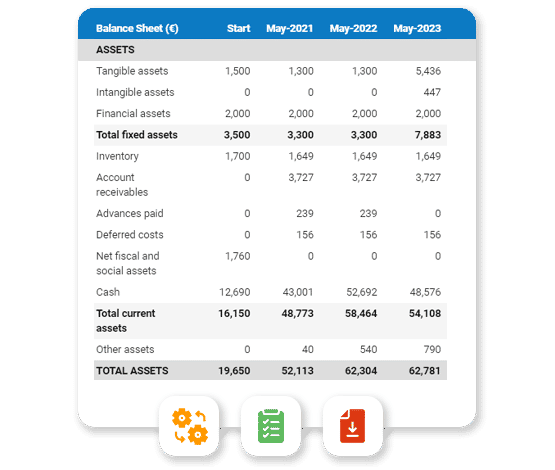
What information is used as input to build a hot dog stall financial forecast?
A hot dog stall's financial forecast needs to be built on the right foundation: your assumptions.
The data required to create your assumptions will depend on whether you are a new or existing hot dog stall.
If you are creating (or updating) the forecast of an existing hot dog stall, then your main inputs will be historical accounting data and operating metrics, and your team’s view on what to expect for the next three to five years.
If you are building financial projections for a new hot dog stall startup, you will need to rely on market research to form your go-to-market strategy and derive your sales forecast.
For a new venture, you will also need an itemised list of resources needed for the hot dog stall to operate, along with a list of equipment required to launch the venture (more on that below).
Now that you understand what is needed, let’s have a look at what elements will make up your hot dog stall's financial forecast.
The sales forecast for a hot dog stall
The sales forecast, also called topline projection, is normally where you will start when building your hot dog stall financial forecast.
Creating a coherent sales projection boils down to estimating two key drivers:
- The average price
- The number of monthly transactions
To do this, you will need to rely on historical data (for an existing business), market research data (for both new and existing hot dog stalls), and consider the elements below:
- Operating location: The location of your hot dog stall can greatly affect the number of monthly transactions. If your stall is located in a high-traffic area such as a popular tourist spot or near a busy office building, you can expect more customers and potentially higher prices.
- Seasonal demand: The demand for hot dogs can vary depending on the season. During summer months, when people are more likely to be outdoors and attending events like fairs and festivals, you can expect a higher number of monthly transactions. On the other hand, during colder months, when people are less likely to be outside, you may see a decrease in sales.
- Competition: The presence of other hot dog stalls or food vendors in the same area can affect your average price and number of monthly transactions. If there is a high concentration of similar businesses, you may need to adjust your prices or offer unique menu items to stand out and attract customers.
- Cultural events: Cultural events such as sports games or concerts can also impact your business. If your hot dog stall is located near a stadium or concert venue, you can expect an increase in demand and potentially charge higher prices during these events.
- Quality of ingredients: The quality of your hot dog ingredients can also affect your average price and number of monthly transactions. If you use high-quality, fresh ingredients, you may be able to charge higher prices and attract more customers who are willing to pay for a better product.
After the sales forecast comes the operating expenses budget, which we will now look into in more detail.
Need inspiration for your business plan?
The Business Plan Shop has dozens of business plan templates that you can use to get a clear idea of what a complete business plan looks like.
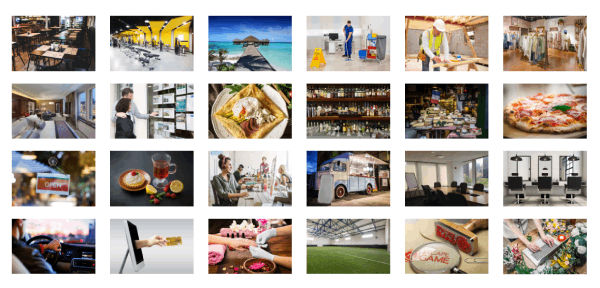
The operating expenses for a hot dog stall
The next step is to estimate the costs you’ll have to incur to operate your hot dog stall.
These will vary based on where your business is located, and its overall size (level of sales, personnel, etc.).
But your hot dog stall's operating expenses should normally include the following items:
- Food and Supply Costs: This includes the cost of purchasing ingredients for your hot dogs, such as buns, sausages, condiments, and toppings. It also includes any other supplies needed for food preparation, such as cooking oil, utensils, and packaging materials.
- Staff Wages: You will need to pay your employees for their time spent working at the hot dog stall. This could include a cook, cashier, and any other staff members you may need to assist with food preparation and serving customers.
- Rent: If you are operating out of a physical location, you will need to pay rent for the space. This could be a fixed monthly cost or a percentage of your sales.
- Utilities: You will need to cover the cost of utilities such as electricity, water, and gas to keep your hot dog stall running.
- Marketing and Advertising: In order to attract customers, you may need to invest in marketing and advertising efforts such as flyers, social media ads, or sponsoring local events.
- Accounting Fees: As a business owner, you may need to hire an accountant to help you with bookkeeping, tax preparation, and other financial tasks.
- Insurance: It is important to have insurance to protect your hot dog stall from any potential risks or liabilities.
- Licenses and Permits: You will need to obtain the necessary licenses and permits to legally operate your hot dog stall.
- Credit Card Processing Fees: If you accept credit or debit card payments, you will need to pay fees to the card processing company for each transaction.
- Software Licenses: You may need to purchase software licenses for programs such as point-of-sale systems, accounting software, or scheduling tools.
- Banking Fees: Your business bank account may charge fees for services such as wire transfers, overdraft protection, or monthly maintenance.
- Cleaning and Maintenance: You will need to keep your hot dog stall clean and well-maintained to comply with health and safety standards.
- Vehicle Expenses: If you have a food truck or other mobile hot dog stall, you will need to cover the costs of fuel, maintenance, and insurance for the vehicle.
- Taxes: You will need to set aside money for taxes on your hot dog stall's profits.
- Legal Fees: You may need to consult with a lawyer for legal advice or to draft contracts for your hot dog stall.
This list is not exhaustive by any means, and will need to be tailored to your hot dog stall's specific circumstances.
What investments are needed to start or grow a hot dog stall?
Your hot dog stall financial forecast will also need to include the capital expenditures (aka investments in plain English) and initial working capital items required for the creation or development of your business.
For a hot dog stall, these could include:
- Hot dog cart/trailer: A hot dog stall would need a cart or trailer to serve the hot dogs from. This could include features like a grill, condiment holders, and storage space for supplies.
- Refrigeration system: Keeping the hot dogs and other ingredients fresh is crucial for a successful hot dog stall. You may need to purchase a refrigerator or cooler to store the food items.
- Cooking equipment: In addition to a grill on the cart, you may also need to invest in other cooking equipment such as a deep fryer for fries or a steamer for hot dog buns.
- POS system: A point-of-sale (POS) system can help you keep track of sales and inventory, making it easier to manage your business. It may include features like a cash register, credit card reader, and inventory management software.
- Signage and branding materials: Investing in attractive and eye-catching signage is important for drawing in customers. You may also need to purchase branded materials like menus, napkins, and packaging for your hot dogs.
Again, this list will need to be adjusted according to the size and ambitions of your hot dog stall.
Need a convincing business plan?
The Business Plan Shop makes it easy to create a financial forecast to assess the potential profitability of your projects, and write a business plan that’ll wow investors.
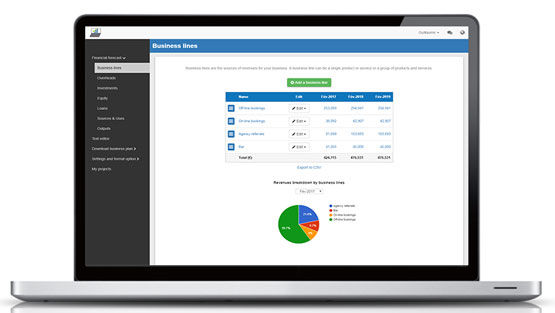
The financing plan of your hot dog stall
The next step in the creation of your financial forecast for your hot dog stall is to think about how you might finance your business.
You will have to assess how much capital will come from shareholders (equity) and how much can be secured through banks.
Bank loans will have to be modelled so that you can separate the interest expenses from the repayments of principal, and include all this data in your forecast.
Issuing share capital and obtaining a bank loan are two of the most common ways that entrepreneurs finance their businesses.
What tables compose the financial plan for a hot dog stall?
Now let's have a look at the main output tables of your hot dog stall's financial forecast.
The forecasted profit & loss statement
The profit & loss forecast gives you a clear picture of your business’ expected growth over the first three to five years, and whether it’s likely to be profitable or not.

A healthy hot dog stall's P&L statement should show:
- Sales growing at (minimum) or above (better) inflation
- Stable (minimum) or expanding (better) profit margins
- A healthy level of net profitability
This will of course depend on the stage of your business: numbers for an established hot dog stall will look different than for a startup.
The projected balance sheet
The projected balance sheet gives an overview of your hot dog stall's financial structure at the end of the financial year.
It is composed of three categories of items: assets, liabilities and equity:
- Assets: are what the business possesses and uses to produce cash flows. It includes resources such as cash, buildings, equipment, and accounts receivable (money owed by clients).
- Liabilities: are the debts of your hot dog stall. They include accounts payable (money owed to suppliers), taxes due and bank loans.
- Equity: is the combination of what has been invested by the business owners and the cumulative profits to date (which are called retained earnings). Equity is a proxy for the value of the owner's stake in the business.

The cash flow projection
The cash flow forecast of your hot dog stall will show how much cash the business is expected to generate or consume over the next three to five years.
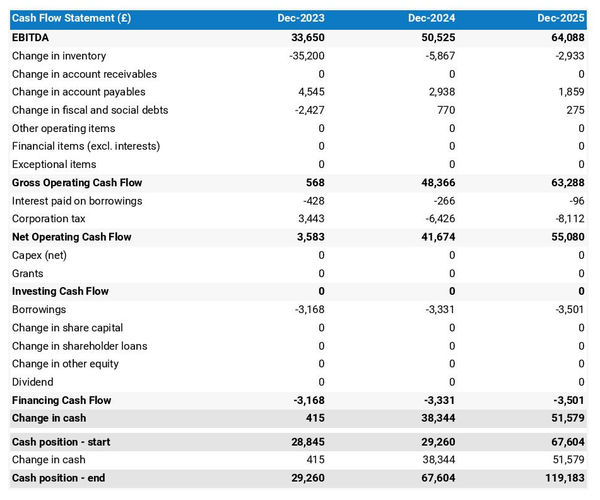
There are multiple ways of presenting a cash flow forecast but from experience, it is better to organise it by nature in order to clearly show these elements:
- Operating cash flow: how much cash is generated by the hot dog stall's operations
- Investing cash flow: what is the business investing to expand or maintain its equipment
- Financing cash flow: is the business raising additional funds or repaying financiers (debt repayment, dividends)
Your cash flow forecast is the most important element of your overall financial projection and that’s where you should focus your attention to ensure that your hot dog stall is adequately funded.
Note: if you are preparing a financial forecast in order to try to secure funding, you will need to include both a yearly and monthly cash flow forecast in your hot dog stall's financial plan.
Need a solid financial forecast?
The Business Plan Shop does the maths for you. Simply enter your revenues, costs and investments. Click save and our online tool builds a three-way forecast for you instantly.

Which tool should you use to create your hot dog stall's financial forecast?
Using the right tool or solution will make the creation of your hot dog stall's financial forecast much easier than it sounds. Let’s explore the main options.
Using online financial forecasting software to build your hot dog stall's projections
The modern and easiest way is to use an online financial forecasting tool such as the one we offer at The Business Plan Shop.
There are several advantages to using specialised software:
- You can easily create your financial forecast by letting the software take care of the financial calculations for you without errors
- You have access to complete financial forecast templates
- You get a complete financial forecast ready to be sent to your bank or investors
- You can easily track your actual financial performance against your financial forecast, and recalibrate your forecast as the year goes by
- You can create scenarios to stress test your forecast's main assumptions
- You can easily update your forecast as time goes by to maintain visibility on future cash flows
- You have a friendly support team on standby to assist you when you are stuck
- It’s cost-efficient and much cheaper than using an accountant or consultant (see below)
If you are interested in this type of solution, you can try our projection software for free by signing up here.
Calling in a financial consultant or chartered accountant
Outsourcing the creation of your hot dog stall financial forecast is another possible solution.
This will cost more than using software as you can expect as your price will have to cover the accountant’s time, software cost, and profit margin.
Price can vary greatly based on the complexity of your business. For a small business, from experience, a simple three-year financial forecast (including a balance sheet, income statement, and cash flow statement) will start at around £700 or $1,000.
Bear in mind that this is for forecasts produced at a single point in time, updating or tracking your forecast against actuals will cost extra.
If you decide to outsource your forecasting:
- Make sure the professional has direct experience in your industry and is able to challenge your assumptions constructively.
- Steer away from consultants using sectorial ratios to build their client’s financial forecasts (these projections are worthless for a small business).
Why not use a spreadsheet such as Excel or Google Sheets to build your hot dog stall's financial forecast?
Creating an accurate and error-free hot dog stall financial forecast with a spreadsheet is very technical and requires a deep knowledge of accounting and an understanding of financial modelling.
Very few business owners are financially savvy enough to be able to build a forecast themselves on Excel without making mistakes.
Lenders and investors know this, which is why forecasts created on Excel by the business owner are often frowned upon.
Having numbers one can trust is key when it comes to financial forecasting and to that end using software is much safer.
Using financial forecasting software is also faster than using a spreadsheet, and, with the rise of artificial intelligence, software is also becoming smarter at helping us analyse the numbers to make smarter decisions.
Finally, like everything with spreadsheets, tracking actuals vs. forecasts and keeping your projections up to date as the year progresses is manual, tedious, and error-prone. Whereas financial projection software like The Business Plan Shop is built for this.
Need a convincing business plan?
The Business Plan Shop makes it easy to create a financial forecast to assess the potential profitability of your projects, and write a business plan that’ll wow investors.

Use our financial forecast templates for inspiration
The Business Plan Shop has dozens of financial forecast examples available.
Our templates contain both a financial forecast and a written business plan which presents, in detail, the company, the team, the strategy, and the medium-term objectives.
Our templates are a great source of inspiration, whether you just want to see what a complete business plan looks like, or are looking for concrete examples of how you should model financial elements in your own forecast.
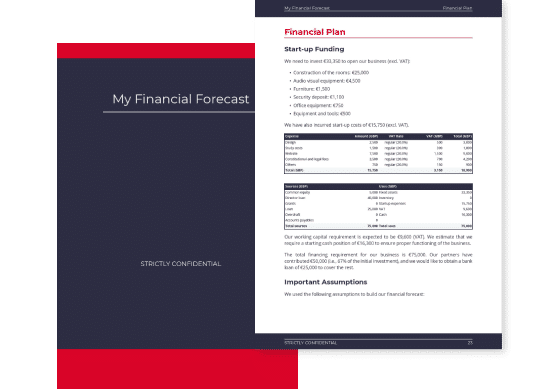
Takeaways
- A financial projection shows expected growth, profitability, and cash generation for your business over the next three to five years.
- Tracking actuals vs. forecast and keeping your financial forecast up-to-date is the only way to maintain visibility on future cash flows.
- Using financial forecasting software makes it easy to create and maintain up-to-date projections for your hot dog stall.
You have reached the end of our guide. We hope you now have a better understanding of how to create a financial forecast for a hot dog stall. Don't hesitate to contact our team if you have any questions or want to share your experience building forecasts!
Need inspiration for your business plan?
The Business Plan Shop has dozens of business plan templates that you can use to get a clear idea of what a complete business plan looks like.

Also on The Business Plan Shop
Know someone who runs or wants to start a hot dog stall? Share our financial projection guide with them!

